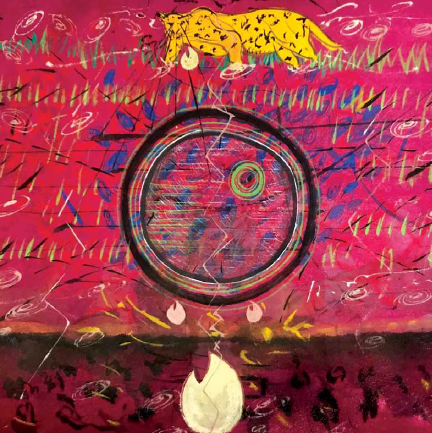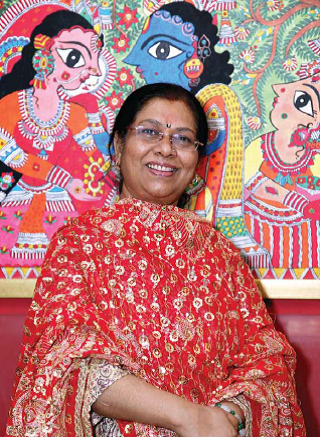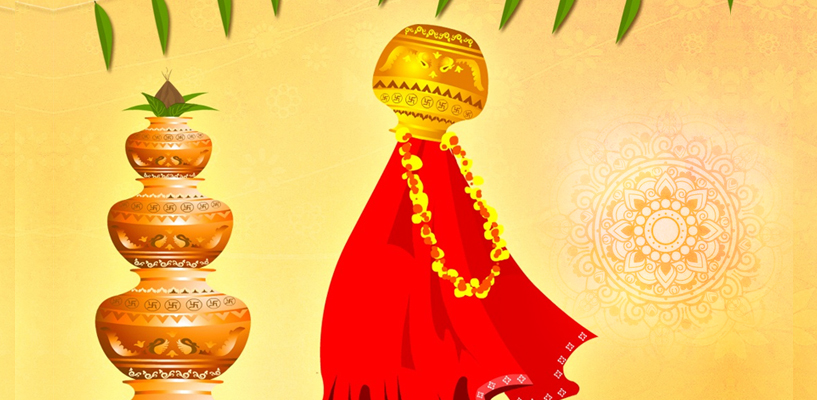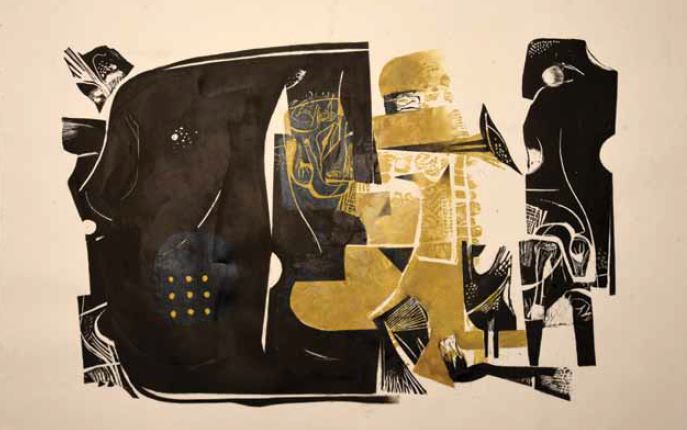
Siddharth Shingade’s colour palette with bright reds, deep browns, golden yellows and pistachio greens not just reflects the sombre mood of the painting, but echoes the intimate relationship that he shares with his homeland
Text: Team Art Soul Life
The deeper the roots, the greater the fruits. This is true of the plant kingdom, and it is also true of 37-year-old Siddharth Shingade, who despite the exposure to modern trends and techniques of the international art scene, remains rooted to native flavour. Everything in Shingade’s artwork – right from the colours to the motifs, from the subjects to his techniques – remind you of his roots in the Marathwada region of Maharashtra, once known for its valour and bravery, but now reduced to being one of India’s worst drought-affected regions. The artist’s strong connection to his roots is depicted in his paintings that echo the mellowed mood of his people and their daily lives. Shingade, who swears he was born to paint, has developed a personal language of art, using which he populates his surfaces with tall figures that appear to be wrapped in history. Mysterious, they seem to be telling a million stories. As Shingade blows a breath of fresh air while valiantly telling the tales of his community, his society rejuvenates on the canvas. His colour palette with bright reds, deep browns, golden yellows and pistachio greens not just reflects the sombre mood of the painting, but echoes the intimate relationship that he shares with his homeland as well as showcase the warmth of the climate and the simple lifestyle of the subject. Says Shingade: “Since childhood, I was aware that I could only do painting rather than anything else. But I didn’t know one could make a career out of just painting. It was only after I had a talk with my uncle that I decided to go with the flow. That’s how my art journey started, which meant leaving my village and staying away from my family and my friends for some years,” he recalls. The move wasn’t easy for someone with such a deep emotional connection with his place of birth. “But it was a small price to pay for a better uture ahead,” he reasons. Shingade, who graduated from L.S. Raheja School of Art, Mumbai, with a G D in Painting, and also went to Sir J.J. School of Art, says he was left speechless when he first saw Austrian master Gustav Klimt’s The Kiss. “The colours, forms, and the subjects touched me very deep inside. One of his paintings, The Kiss, an oilon- canvas painting with added gold leaf, silver and platinum, influenced me a lot,” he says. “So much so that when I was doing my art college assignment, his textures and colours started reflecting on my canvas. I was so happy, but my uncle realised it immediately and taught me to differentiate between influence and inspiration.” Another artist who inspired Shingade was Datta Bansode from the art school in Latur, who once made the town famous with his characteristic black-and-white drawings of Buddha. “During my college days in Latur, he had lots of influence on my work and style. He had painted a woman wearing a hijab and all I could see was her face and hands. So every day, I would admire this same painting until one day I had a profound connection. That woman had so much to say… that painting influenced me a lot,” Shingade says. The artist says nowadays he influences his own self. “My past work offers me endless inspiration. You see, emotion is the reflection of a particular time and space which you cannot hold but can sure understand,” he philosophises. Shingade says that Prabhakar Kolte, the great abstractionist of India, advised him once: “It is very important for an artist to accept solitude because out of that solitude, arises self-reflection and introspection that gives birth to creativity.” Talking of his work, Shingade says he uses mixed media and acrylic to impart textures and details to his artwork with deep earthy tones and a rustic colour palette to illustrate the mellowed mood of his people. “My paintings are monochromatic with a pop of colours, often resonating the dry grounds of my native place and depicting the everyday struggle of the local people, or stories from mythology – Krishna, Shiv-Parvati, or someone else,” he says. It is said that a picture tells a thousand words. Shingade’s paintings are perfect illustrations of this phrase. He is not only an artist, but he is also a storyteller. He weaves appealing stories in his mind and beautifully portrays them on canvas, then, he breathes life into these paintings with his muted,rustic colour palette. Shingade doesn’t attempt to make his work light or add humour. There is a depth, an ongoing conversation that the viewer can listen to. “The deep browns and golden yellows draw upon the warmth of the Marathwada climate as well as its people,” he explains. The mood in his paintings, however, remains sombre, perhaps a reflection of the oppression faced by his people and more so the women. He fashions the hues into its people; farmers, herdsmen. The most striking aspect of his artwork, however, is the insight into the fluidity of Indian livelihood in its villages, especially the women and the stark environment, without stereotyping and self-conscious posturing labourers and even those who share this heat and dust with them on the margins, the mendicants. On his explorations beyond figurative painting, he says: “The other major shift that came into my work has been the introduction of landscapes in the form of trees mainly. This is a subject that was already a part of my earlier work, but has taken centrestage, through different compositions and media. This has also given me the opportunity to work in the very painstaking medium of pen on canvas and also charcoal on canvas.” A close look at his work reveals his signature style of combining black, bold charcoal tones in charcoal. “The form of the tree has fired my imagination to a point where I am also thinking about dabbling in sculpture, in the future.Time will tell how this will shape out. But one thing is certain, there is a lot of new work in my mind that I have to manifest in my art in the years to come,” he says.









 " >
" >
 " >
" >